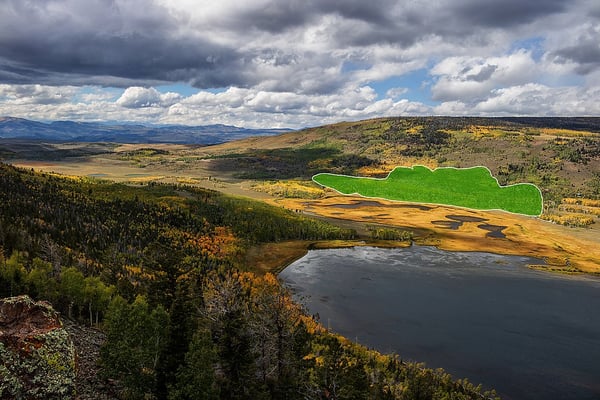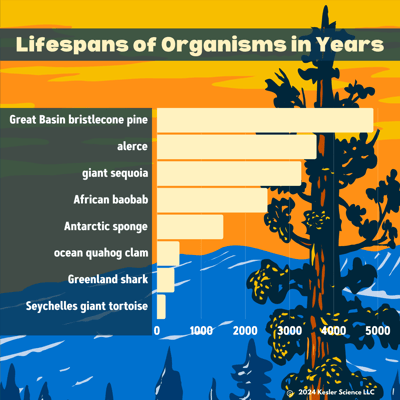Biggest (and Oldest) Forms of Life - Kesler Science Weekly Phenomenon and Graph
There are a lot of good candidates for the largest and oldest living thing on Earth. Giant tortoises, blue whales, and sequoia trees are all logical choices. But what actually holds the crown for the biggest living organism? A 100-acre patch of aspen trees found in Utah!

This might be confusing because the aspen trees, collectively called "Pando", grow "out" instead of "up." An original aspen seed grew into a tree, then that tree grew roots which sprouted new trees. All the trees are connected to the same huge underground root system. This brilliant strategy allows the trees to pool their resources and share the work of photosynthesis.
How do scientists know that Pando is one, huge living thing? They took DNA samples of some of the 47,000 stems that make up the swath of aspens and found them all to be genetically identical. This means that even if individual trees fall or die off, the entire patch of forest is one singular organism. We're talking about a living thing that weighs 13 million pounds!
Here's the wild part. Scientists are pretty sure Pando is also really old. Signs point to this aspen system being more than 10,000 years old!
All this talk about ancient life forms got me thinking about average life spans for various organisms. While there are some animals that can stick around for an impressively long time, it seems like the big trees are the clear winners :

Another group that wins out are ocean-dwelling creatures. The Seychelles giant tortoise, for example, is the longest-lived land animal at about 192 years, while specimens of the longest-lived ocean creature, the Antarctic sponge, are at least 1,500 years old. That's not even half the age of the oldest single trees, though, and a drop in the bucket compared to Pando.
It would be fascinating to study what adaptations these organisms exhibit that produce their impressive lifespans. Are they uniquely adapted to their environments? Do they have defenses from predators or diseases? What keeps an organism living for thousands of years?
When you find out, let me know! 😀
- Chris
By the way, if I brought the graph above to my students in class, here are some questions I would ask them:
💡What is the lifespan of the ocean quahog clam according to the graph? How does this compare to the lifespan of the Antarctic sponge?
💡Look at the animals with the longest lifespans shown on the graph. Do you notice any patterns? Predict why this pattern might help animals live longer.
💡About how many generations of Antarctic sponge could pass during the lifespan of one Great Basin bristlecone pine tree?
*Image credit to Lance Oditt, CC BY-SA 4.0 <https://creativecommons.org/licenses/by-sa/4.0>, via Wikimedia Commons

.png?width=352&name=Graph(2).png)

